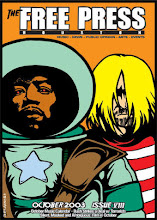The White Ribbon: interview with cinematographer Christian Berger

Cinematographer Christian Berger asks me with true inquisitiveness whether it's a good thing to be nominated by the American Society of Cinematographers as one of the five best photographed films of the last year. He's speaking to Free Press Houston by phone from New York City where the night before he won a best cinematography award from the New York Film Critics Circle for The White Ribbon (Das weisse Band).
As directed by Michael Haneke and like many of his films The White Ribbon immerses the viewer in a world of mysterious goings-on and ambiguity. The action takes place in a small village in the North of Germany ("Two hours north of Berlin.") just before the outbreak of WWI. The images captured by Berger in black and white are as sumptuous as anything you've seen in a movie. It's little surprise when a few weeks after the interview Berger is also nominated for an Oscar for Best Cinematography.
"Shooting in black and white lends itself to the remember voice of the narrator," explains Berger. "You get this rich scale of gray, great contrast. Color is pastel but black and white is gray. You have more latitude, more shadows."
Haneke provides a series of uncanny incidents: the town doctor is injured when his horse topples due to a trip wire; secret love affairs come to light; the town's richest citizen has his male child kidnapped and later found alive but bound, hanging upside down where he was brutally whipped; a field of cabbage has been vandalized. It's almost like an Agatha Christie mystery in the sense that you feel that by the end everyone in the village is responsible. If you're familiar with other Haneke films, like The Piano Teacher or Cache, both of which Berger also shot, you know the mood. Perhaps not curiously Berger doesn't like Funny Games another film that Haneke made in both French and English versions ten years apart.
To prepare for production Berger watched some recent films that were released n black and white, but like The White Ribbon shot on color stock. Black and white stock in 35 mm just isn't as available nowadays as it was in the past. Berger notes that he lit the film for black and white then tweaked the image in post-production. Some of those films he referenced were Good Night and Good Luck, and The Man Who Wasn't There. Another film was Unforgiven due to its use of candles and oil lamps as a natural source of light. "Look at a black and white Bergman film," advises Berger. "He never kept the shot wide because then the screen shows too many shadows."
The White Ribbon opens in Houston this Friday at the Angelika.









0 Comments:
Post a Comment
<< Home